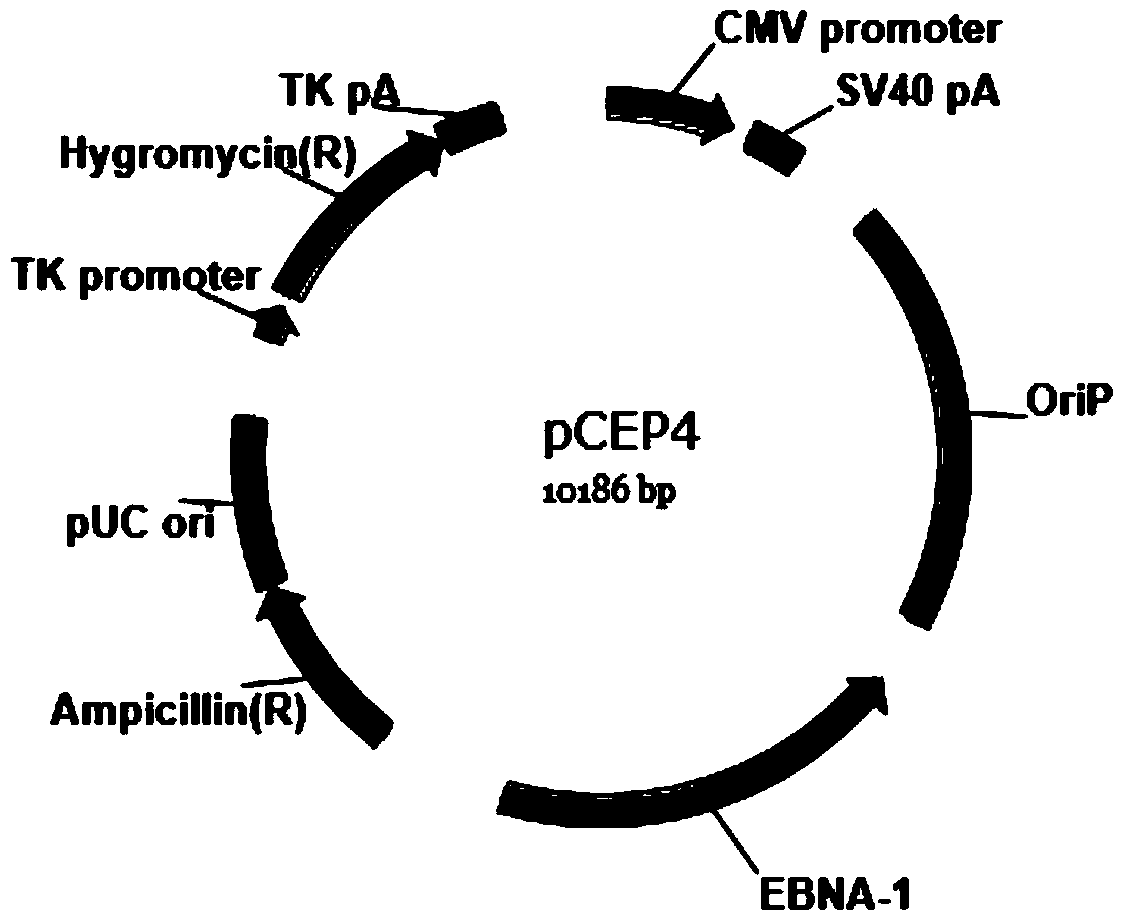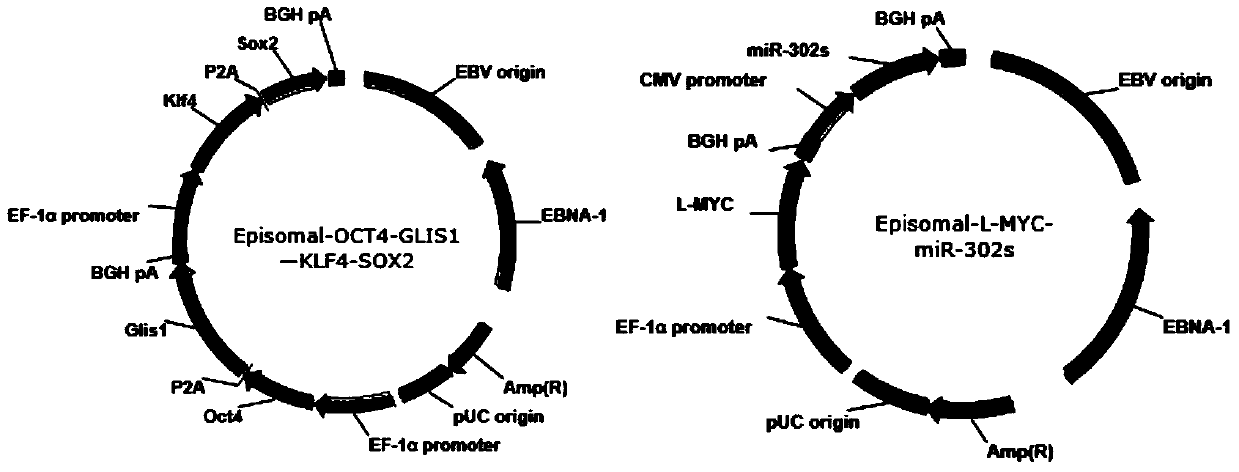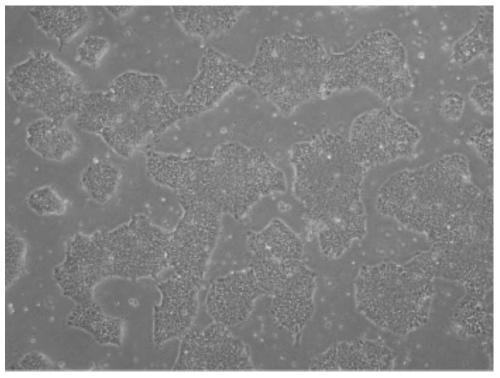A kind of non-viral ipscs induction method and its induction composition, kit and ipscs obtained therefrom
A non-viral, small-molecule compound technology, applied in the direction of artificially induced pluripotent cells, viruses/phages, biochemical equipment and methods, etc., can solve the problems of iPSCs cell tumorigenesis, achieve high applicability, and shorten the induction culture time , the effect of reducing the risk of clinical application
- Summary
- Abstract
- Description
- Claims
- Application Information
AI Technical Summary
Problems solved by technology
Method used
Image
Examples
Embodiment 1
[0146] This embodiment 1 provides a non-viral iPSCs induction method, comprising the following steps:
[0147] 1) constructing DNA sequences expressing reprogramming factors OCT4, SOX2, GLIS1, KLF4, L-MYC and hsa-miR-302s into episomal plasmids to obtain recombinant plasmids;
[0148] Wherein, the hsa-miR-302s is hsa-miR-302cluster, and its sequence is shown in SEQ ID No.12;
[0149] Among them, the reprogramming factors OCT4 and GLIS1 are connected through the P2A co-expression element and use the EF-1α promoter to initiate transcription, and KLF4 and SOX2 are connected through the P2A co-expression element and use the EF-1α promoter to initiate transcription, and will contain OCT4, The DNA sequences of the four genes GLIS1, KLF4, and SOX2 were jointly constructed into an episomal plasmid; the reprogramming factors L-MYC and hsa-miR-302s were transcribed through the EF-1α promoter and the CMV promoter, respectively, and their The DNA sequence is constructed into an episomal ...
Embodiment 2
[0160] This example is based on Example 1. During the induction culture process in step 2), a small molecular compound is added to stimulate the induced reprogramming process.
[0161] A method for inducing non-viral iPSCs, comprising the following steps:
[0162] 1) constructing DNA sequences expressing reprogramming factors OCT4, SOX2, GLIS1, KLF4, L-MYC and hsa-miR-302s into episomal plasmids to obtain recombinant plasmids;
[0163] Wherein, the hsa-miR-302s is hsa-miR-302cluster, and its sequence is shown in SEQ ID No.12;
[0164] Among them, the reprogramming factors OCT4 and GLIS1 are connected through the P2A co-expression element and use the EF-1α promoter to initiate transcription, and KLF4 and SOX2 are connected through the P2A co-expression element and use the EF-1α promoter to initiate transcription, and will contain OCT4, The DNA sequences of the four genes GLIS1, KLF4, and SOX2 were jointly constructed into an episomal plasmid; the reprogramming factors L-MYC an...
Embodiment 3
[0169] This example provides a non-viral iPSCs induction method. In this method, in addition to the reprogramming factors OCT4, SOX2, GLIS1, KLF4, L-MYC and hsa-miR-302s, the high risk factors c-MYC and SV40 are also studied -The effect of LT or TP53 on iPSCs to study the effect of different reprogramming factors on the karyotype of iPSCs.
[0170] Among them, c-MYC, SV40-LT or TP53 shRNA were respectively constructed into episomal plasmids, or TP53 inhibitor TP53 siRNA was directly transfected into somatic cells, or Pifithrin-μ or Pifithrin-αhydrobromide was directly added to somatic cells.
[0171] A method for inducing non-viral iPSCs, comprising the following steps:
[0172] 1) The DNA sequences expressing reprogramming factors OCT4, SOX2, GLIS1, KLF4, L-MYC and hsa-miR-302s were constructed into episomal plasmids as the control group, that is, group 1; on the basis of the control group, the Add high-risk factors c-MYC, SV40-LT or TP53 shRNA to the episomal plasmid as sho...
PUM
 Login to View More
Login to View More Abstract
Description
Claims
Application Information
 Login to View More
Login to View More - R&D
- Intellectual Property
- Life Sciences
- Materials
- Tech Scout
- Unparalleled Data Quality
- Higher Quality Content
- 60% Fewer Hallucinations
Browse by: Latest US Patents, China's latest patents, Technical Efficacy Thesaurus, Application Domain, Technology Topic, Popular Technical Reports.
© 2025 PatSnap. All rights reserved.Legal|Privacy policy|Modern Slavery Act Transparency Statement|Sitemap|About US| Contact US: help@patsnap.com



